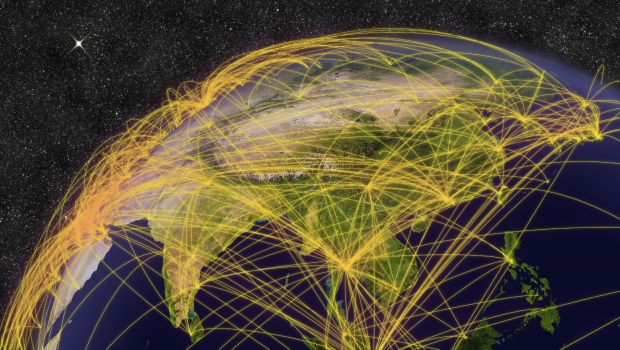Understanding trade policies and practices in Asia can often pose a challenge for companies that want to enter into the booming Asian market. In this INSIDER Q&A, Maes Alconcel, manager of policy and government affairs, EAS Strategies - Asia Pacific, offers her advice for comprehending the trade practices related to tariff free zones, understanding ASEAN Rules of Origin criteria, and complying with the improved ASEAN origin requirement.
July 30, 2015

Understanding trade policies and practices in Asia can often pose a challenge for companies that want to enter into the booming Asian market. In this INSIDER Q&A, Maes Alconcel, manager of policy and government affairs, EAS Strategies - Asia Pacific, offers her advice for comprehending the trade practices related to tariff free zones, understanding ASEAN Rules of Origin criteria, and complying with the improved ASEAN origin requirement. Alconcel is also speaking on this topic at the Vitafoods Asia Conference, taking place alongside the expo Sept. 2 and 3 in Hong Kong; for more information on the conference, visit vitafoodsasia.com/confprog.
 INSIDER: What are the top three key items to understand about the ASEAN tariff free zone and its impact on trade?
INSIDER: What are the top three key items to understand about the ASEAN tariff free zone and its impact on trade?
Alconcel: Companies looking to trade in the ASEAN tariff free zone should first ensure that they identify the right classification for the product that is to be traded, either under the Harmonised System (HS) or the ASEAN Harmonised Tariff Nomenclature (AHTN). The HS is an international nomenclature (at six-digit level) developed by the World Customs Organisation (WCO) for the classification of goods, whereas the AHTN is a commodity nomenclature jointly developed by ASEAN member countries, harmonized at eight-digit level across all ASEAN member countries. This is vital as identifying the right code determines the measures that a company needs to comply with, whether tariff or non-tariff ones. Companies that take a misstep at this stage risk paying the wrong tariffs or getting rejected by customs.
Once product classification is out of the way, companies need to identify the origin criteria per product, to ensure that they satisfy the Rules of Origin (ROO), in order to qualify for the preferential treatment under the ASEAN Trade in Goods Agreement (ATIGA).
Last but not least, companies must determine the import clearance and customs procedures required by both exporting and importing countries for the particular product that is being traded. Necessary documentation can then be prepared accordingly to ensure smooth processing and trade.
INSIDER: How complicated are the ASEAN Rules of Origin Criteria, and what would make them worth meeting?
Alconcel: The ROO is an additional requirement that companies need to fulfill if they wish to avail various Schemes of Preferences and Free Trade Agreements; in this case the ATIGA. In essence, companies will need to prove that their goods are either wholly obtained or produced in an ASEAN Member State, or attest that it possesses a Regional Value Content (RVC) of not less than 40 percent, or demonstrate that the non-originating raw materials have undergone sufficient processing to warrant a Change in Tariff Classification (CTC) at the two-digit, four-digit or six-digit level of the HS. The qualifying criterion for ROO consists of wholly obtained rule, a set of general rules and a list of product specific rules, which exporters need to check against.
The AFTA/ATIGA offers more favorable customs duties than those offered under the World Trade Organizations (WTO). Specifically, ASEAN 6 (Brunei Darussalam, Indonesia, Malaysia, Philippines, Singapore and Thailand) have eliminated import duties on 99.65 percent of traded goods in the region beginning January 1, 2010. CLMV (Cambodia, Lao PDR, Myanmar and Vietnam) have also removed customs tariffs on about 93 percent of all products since January 1, 2015, and are expected to do the same on the remaining items by 2018.
For example, an exporter of food supplements from the Philippines can save 42.6 percent in tariffs when entering Indonesia’s market through the AFTA.
The concept of ROO per se is complex because of its technicalities thus complying with the ASEAN ROO criteria entails time and effort. But it is only at the start of the process that is most difficult. Once a company has proven the origin of its product(s) and established good reputation to the relevant authorities of the importing country, its succeeding transactions would be a lot easier. In addition, tariff savings in the long run would considerably outweigh the costs incurred in the short-term.
INSIDER: What drove the decision to improve the ASEAN origin requirement?
Alconcel: The ASEAN decided to make the rules of the game under the AFTA, particularly the ROO aspect, more liberal to further facilitate trade in the region. The change is to address the issues raised by businesses – that the strict origin requirement hindered them from taking advantage of the ASEAN preferential tariffs.
In particular, the process criterion and the value-added/percentage criterion in the ROO have been especially helpful for the food industry, because most food products undergo processing. Companies are allowed to import raw materials from outside of ASEAN, which allows them to ensure the taste and quality of their food product, provided that the food processing takes place in an ASEAN Member State.
INSIDER: What are two main tips for compliance with the improved ASEAN origin requirement?
Alconcel:
1. Determine the right classification for the product to be exported/imported (HS/AHTN Code) to identify the right origin criteria of the product; and
2. Understand ROO and the applicable origin criteria per product to be exported/imported.
Hear more from Alconcel by attending the Vitafoods Asia Conference, which runs alongside the exhibition from September 2 to 3 at AsiaWorld-Expo in Hong Kong. Vitafoods Asia is organized by the experienced team from Informa Exhibitions who are behind the well-established, world-leading Vitafoods Europe event. Since its launch in 2011, Vitafoods Asia has shown year-on-year growth and is proving itself as the hub in Asia for nutraceuticals, functional food and drink ingredients, raw materials and dietary supplements. To register for Vitafoods Asia 2015, visit vitafoodsasia.com/register.
You May Also Like




.png?width=800&auto=webp&quality=80&disable=upscale)